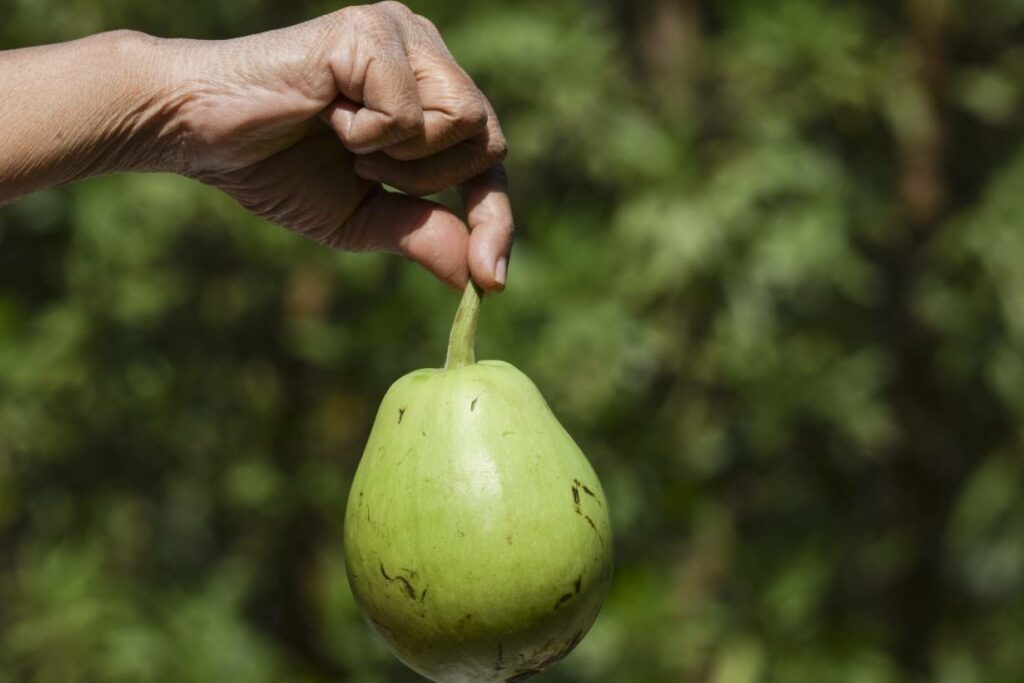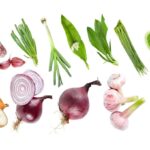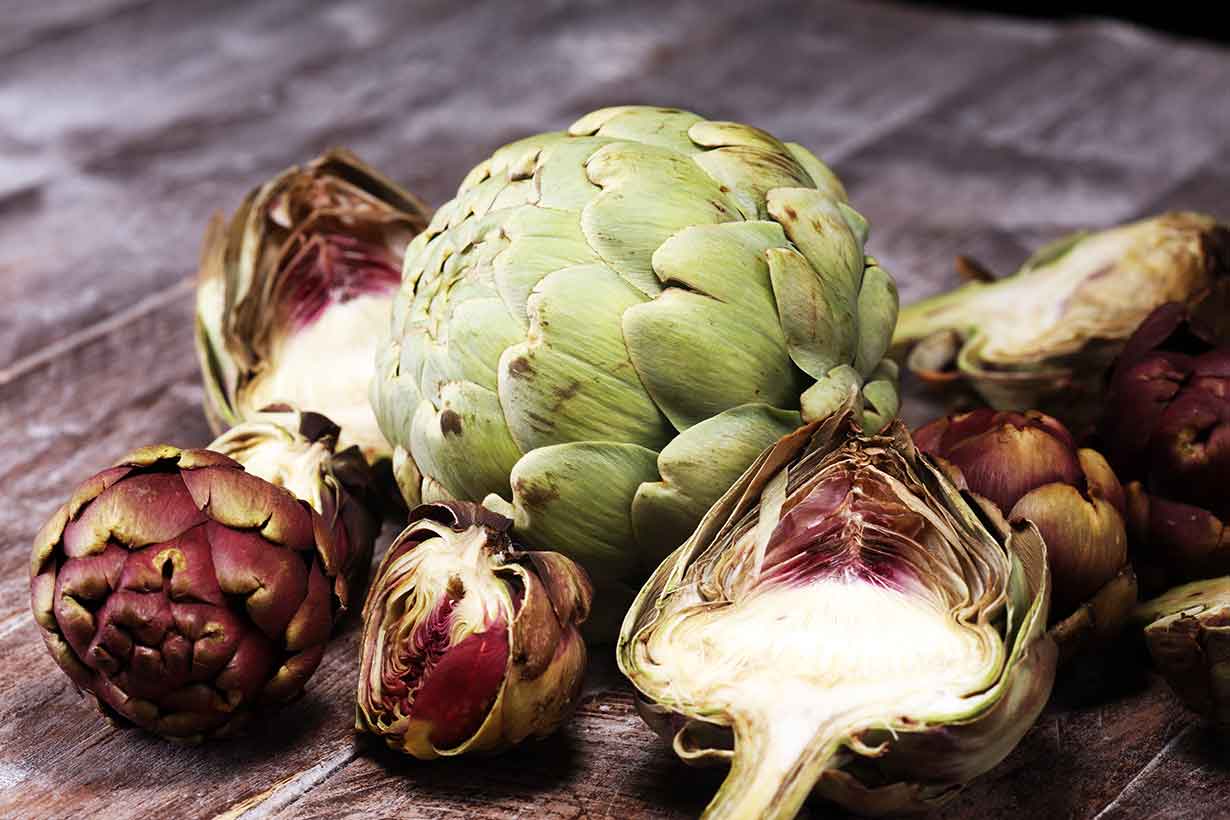Bottle gourd is a vegetable with a unique appearance and an interesting taste.
However, it is relatively unknown in the United States and Europe.
This article provides a complete guide to bottle gourd, its nutritional properties, and its potential benefits and downsides.
Table of contents
What Is Bottle Gourd?

Bottle gourd is the fruit of a vining plant known scientifically as Lagenaria siceraria, a member of the squash family. Among its various other names, bottle gourd is also known as calabash and white-flowered gourd (1).
Like other members of the squash family, bottle gourd is used as a cooked vegetable for culinary purposes despite being a botanical fruit. It may also be used for the commercial production of bottle gourd juice.
The bottle gourd has a unique appearance with a pale green color and an hourglass shape, as shown in the above image.
Once cooked, the vegetable has a soft texture similar to a slightly firmer zucchini. These two vegetables also share some flavor characteristics, but bottle gourd tastes slightly sweeter.
Bottle gourd is likely native to Africa and is particularly popular in South and East Asia. As of 2023, India is the biggest global producer (and exporter) of the vegetable, followed by China and Pakistan (2, 3).
What Nutrients Does Bottle Gourd Provide?
Using nutritional data from the USDA’s FoodData Central database, the following tables present the full nutritional values of cooked bottle gourd per 146-gram cup (4).
Daily values (% DV) based on a 2000-calorie diet have been calculated using USDA data alongside the FDA’s recommended daily values (4, 5).
Nutrition Facts
| Name | Amount | % Daily Value |
|---|---|---|
| Calories | 22 kcal | |
| Carbohydrates | 5.39 g | 2.0% DV |
| Fiber | 1.75 g | 6.3% DV |
| Fat | 0.03 g | <0.1% DV |
| Saturated | 0.003 g | <0.1% DV |
| Monounsaturated | 0.006 g | |
| Polyunsaturated | 0.013 g | |
| Omega-3 | 0 g | |
| Omega-6 | 0.013 g | |
| Protein | 0.88g | 1.8% DV |
| Cholesterol | 0 mg | 0% DV |
As the table shows, bottle gourd is primarily a carbohydrate source and contains minimal fat and protein levels.
With 1.75 grams of fiber per cup, bottle gourd is a relatively good source of fiber, considering its low-calorie provision.
Bottle gourd has a water content equal to 95.3% of its weight (4).
Vitamins
| Vitamin | Amount | % Daily Value |
|---|---|---|
| Folate, DFE | 5.84 mcg | 1.5% DV |
| Vitamin A | 0 mcg | 0% DV |
| Vitamin B1 (thiamin) | 0.042 mg | 3.5% DV |
| Vitamin B2 (riboflavin) | 0.032 mg | 2.5% DV |
| Vitamin B3 (niacin) | 0.569 mg | 3.6% DV |
| Vitamin B5 (pantothenic acid) | 0.21 mg | 4.2% DV |
| Vitamin B6 (pyridoxine) | 0.055 mg | 3.2% DV |
| Vitamin B12 (cobalamin) | 0 mcg | 0% DV |
| Vitamin C | 12.4 mg | 13.8% DV |
Minerals
| Mineral | Amount | % Daily Value |
|---|---|---|
| Calcium | 35 mg | 2.7% DV |
| Copper | 0.038 mg | 4.2% DV |
| Iron | 0.365 mg | 2.0% DV |
| Magnesium | 16.1 mg | 3.8% DV |
| Manganese | 0.096 mg | 4.2% DV |
| Phosphorus | 19 mg | 1.5% DV |
| Potassium | 248 mg | 5.3% DV |
| Selenium | 0.292 mcg | 0.5% DV |
| Sodium | 2.92 mg | 0.1% DV |
| Zinc | 1.02 mg | 9.3% DV |
Benefits of Bottle Gourd
This section will look at some primary benefits of bottle gourd consumption.
A Good Source of Vitamin C
Bottle gourd provides 12.4 mg of vitamin C per 246-gram cup, equivalent to 14% of the daily value (4, 5).
Vitamin C is an essential vitamin that plays a vital role in the immune system and helps to protect the body against oxidative stress (6, 7).
Moderate Levels of the Minerals Potassium and Zinc
Potassium is one of the nutrients that the dietary guidelines for Americans recognize as ‘dietary components of public health concern for the general U.S. population’ (8).
This is because most people consume too much sodium and insufficient amounts of potassium (9, 10).
Furthermore, these two minerals help to control blood pressure and have opposing effects. While there is a clear interaction between sodium and increased blood pressure, potassium blunts sodium’s effects and can help to lower blood pressure (11).
Bottle gourd provides a moderate source of potassium; a cup serving offers 248 mg, 5.3% of the daily value. Meanwhile, the vegetable contains only trace amounts of sodium (4, 5).
Additionally, bottle gourd is a good source of zinc. A cup serving offers 1.02 mg, 9.3% of the daily value (4, 5).
Low In Calories
It is worth noting that, unlike some foods, bottle gourd does not provide significant levels of any one vitamin or mineral.
However, if we look at the calorie provision of bottle gourd, we can see that a whole cup serving only contains 22 calories.
We could thus consider it a benefit that this vegetable provides moderate levels of numerous vitamins and minerals for such a low intake of calories.
Rich Source of Phytochemicals
Phytonutrients (also known as phytochemicals) are bioactive compounds found in plants.
Bioactive means that they can exert a biological effect on the body. These compounds are thought to benefit human health and may have (12, 13, 14).
Scientific research on bottle gourd has demonstrated that the vegetable contains the following phytonutrients in significant concentrations (15):
- Campesterol
- Cucurbitacins B
- Kaempferol
- Isoquercitrin
May Improve Blood Lipid (Cholesterol) Profiles
There is a relative lack of studies on bottle gourd involving human participants.
However, a 2013 study examined the effects of a bottle gourd extract on blood lipids (cholesterol) and antioxidant function (16).
The study gave a dose of 200ml of freshly prepared bottle gourd juice extract to 50 participants for 90 days, half (25) of whom had dyslipidemia. Dyslipidemia refers to excessively high blood lipids (fats in the blood such as cholesterol and triglycerides).
Interestingly, over the 90 days, all participants saw significant decreases in the following markers of cardiovascular risk:
- Low-density lipoprotein cholesterol (LDL-C)
- Fasting blood glucose
- Systolic blood pressure
- Triglycerides
Lower levels of these health markers are associated with decreased cardiovascular risk (17, 18).
On the downside, this study has some clear limitations. For one thing, it is unclear how much bottle gourd the extract used is equivalent to. Additionally, the trial was neither controlled nor randomized.
Potential Downsides
Thus far, we have learned that bottle gourd is a reasonably nutritious vegetable with a good range of nutrients for minimal calories.
However, it has some real potential downsides to be aware of.
It can become toxic with improper storage (bottle gourd poisoning)
The main concern about bottle gourd is that, in some situations, it can concentrate high levels of a toxin.
This is because bottle gourd contains compounds called cucurbitacins, which can have a toxic effect at high doses. However, generally speaking, this is not usually an issue, and, at the typical levels cucurbitacins are present, it is OK to consume bottle gourd.
However, in some situations where bottle gourds are exposed to environmental stress (such as storage at excessively high temperatures and poor soil quality), these cucurbitacin levels can increase to a problematic level (19).
While such occurrences are rare, the scientific literature contains several reported case studies of bottle gourd poisoning, which usually leads to vomiting, stomach cramps, and diarrhea (20, 21, 22, 23).
Sadly, there have even been three deaths in people who consumed freshly prepared bottle gourd juice (24). Drinking the juice is more of a risk factor, as it is a more concentrated source and has not been cooked.
However, such occurrences are very rare
Once again, it is essential to note that bottle gourd poisoning is very rare.
Furthermore:
- An extremely bitter taste can signify high levels of cucurbitacins. Thus, any fresh bottle gourd or juice product with a bitter taste should be discarded (25).
- Bottle gourd is not the only dietary source of cucurbitacins. These compounds are also present in cucumbers and pumpkins (26).
Can Be Expensive
Since the commercial cultivation of bottle gourd is limited in the United States and most of Europe, they are usually imported.
As with many imported foods, this makes them relatively harder to find and comparatively expensive compared to similar native vegetables like zucchini.
Is Bottle Gourd Useful For Weight Loss?
It is possible to see numerous claims on the Internet about bottle gourd being a good choice for weight loss. However, these claims likely stem from marketing efforts surrounding bottle gourd juice and extract products that are available.
The truth is that there is zero research from human trials to support weight loss claims about bottle gourd.
Nutritionally, bottle gourd offers fiber, high water content, and relatively high food volume for minimal calories. These are all qualities that could potentially help with managing appetite as part of a healthy dietary pattern.
However, the overall dietary pattern is more important than anything else for managing weight. Furthermore, there is no scientific evidence that bottle gourd has unique weight management benefits.
Final Thoughts
Bottle gourd is a vegetable similar to foods like zucchini and cucumber.
It provides a broad range of essential nutrients for very few calories, but most nutrients are present at low to moderate levels.








